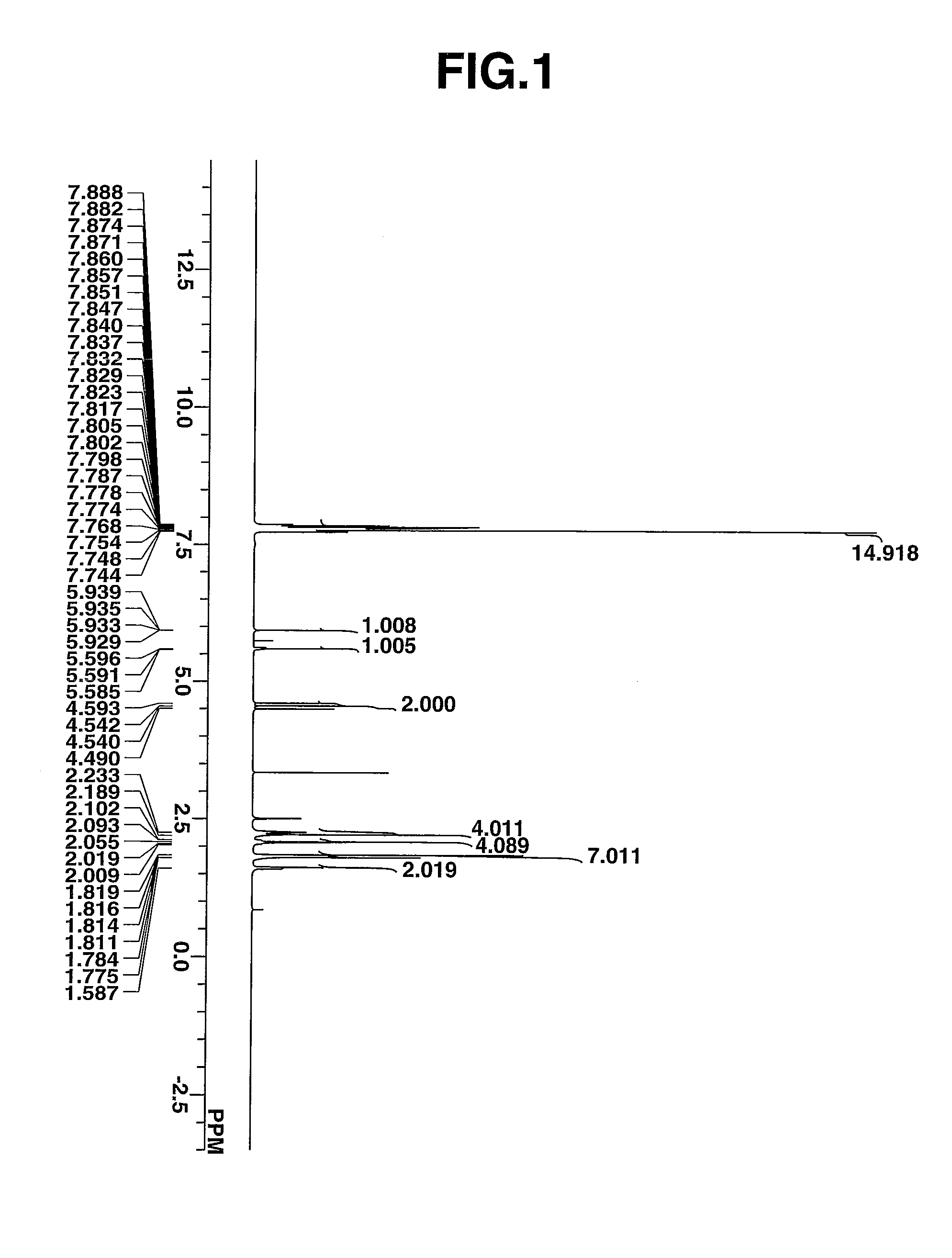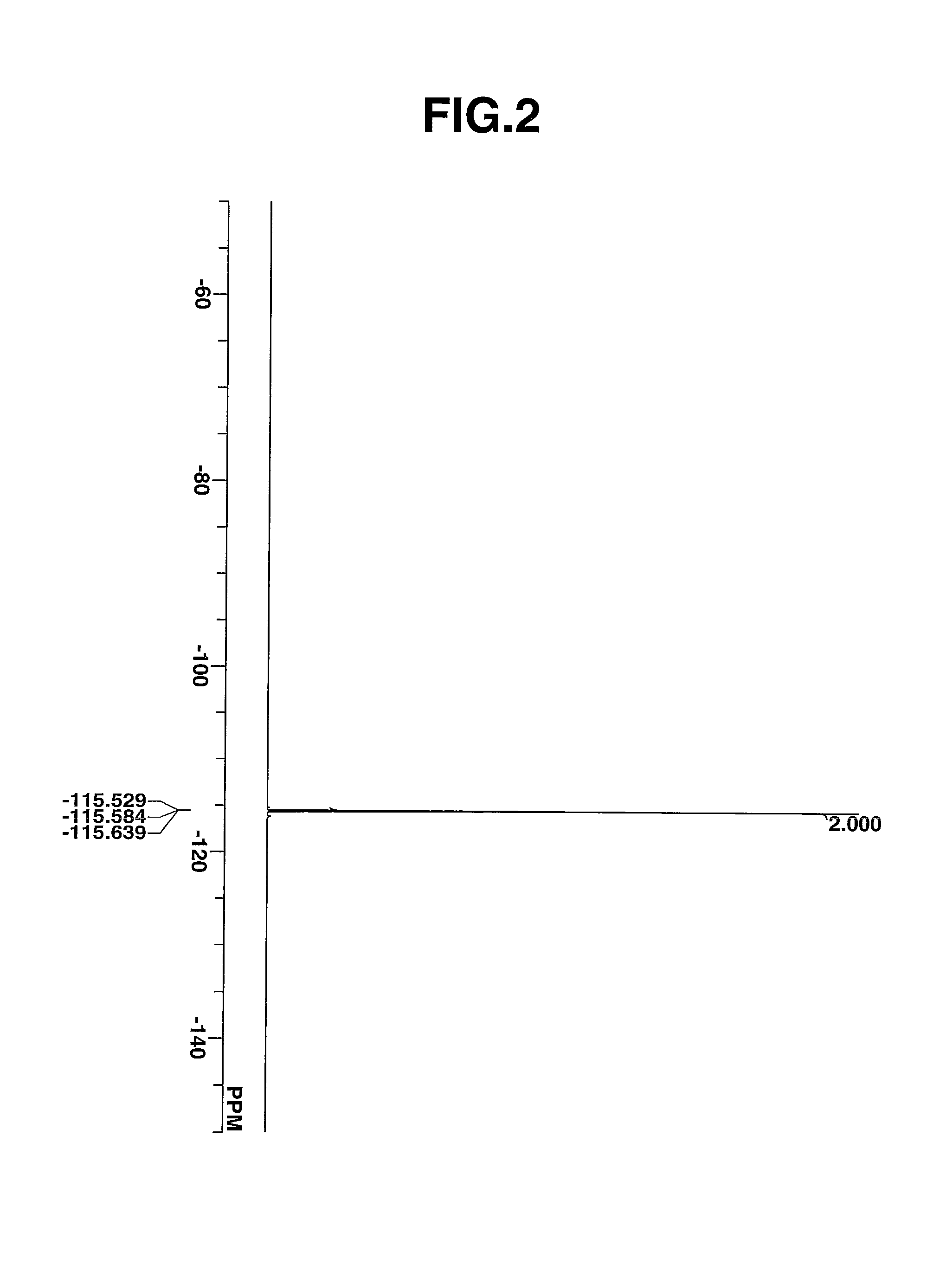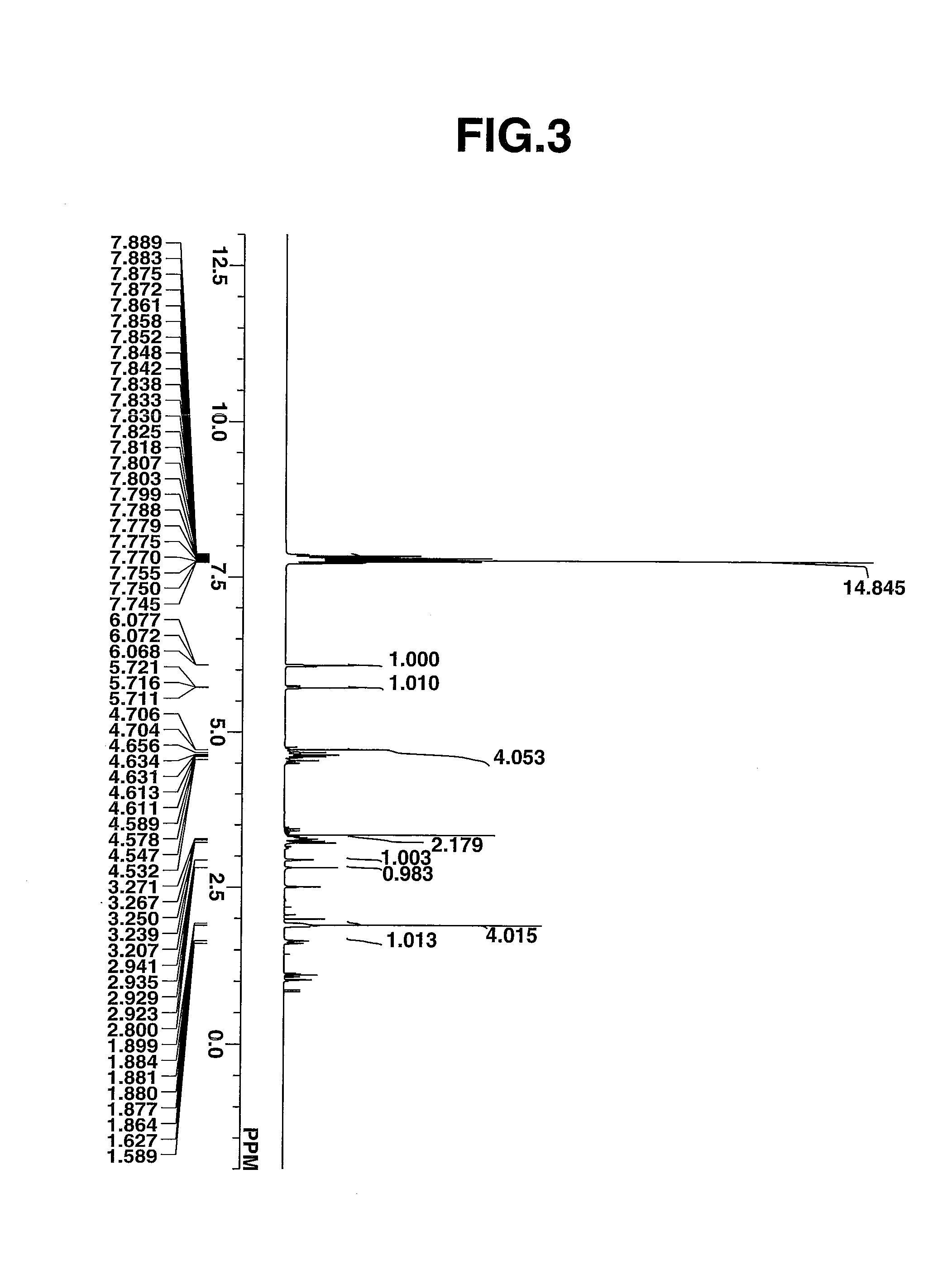Polymerizable anion-containing sulfonium salt and polymer, resist composition, and patterning process
a technology of polymerizable anion and sulfonium salt, applied in the field of polymerizable anioncontaining sulfonium salt and polymer, resist composition, patterning process, can solve the problems of insufficient acid strength, failure of resolution, and several lags in the development of the sulfonium salt, and achieve high acidity, facilitate efficient scission of acid labile groups, and high resolution
- Summary
- Abstract
- Description
- Claims
- Application Information
AI Technical Summary
Benefits of technology
Problems solved by technology
Method used
Image
Examples
synthesis example 1-1
Synthesis of Triphenylsulfonium Chloride
[0231]Diphenyl sulfoxide, 40 g (0.2 mole), was dissolved in 400 g of dichloromethane, which was stirred under ice cooling. At a temperature below 20° C., 65 g (0.6 mole) of trimethylsilyl chloride was added dropwise to the solution, which was allowed to mature for 30 minutes at the temperature. Then, a Grignard reagent which had been prepared from 14.6 g (0.6 mole) of metallic magnesium, 67.5 g (0.6 mole) of chlorobenzene and 168 g of tetrahydrofuran (THF) was added dropwise at a temperature below 20° C. The reaction solution was allowed to mature for one hour, after which 50 g of water at a temperature below 20° C. was added to quench the reaction. To this solution, 150 g of water, 10 g of 12N hydrochloric acid, and 200 g of diethyl ether were further added. The water layer was separated and washed with 100 g of diethyl ether, yielding an aqueous solution of triphenylsulfonium chloride. The compound in aqueous solution form was used in the su...
synthesis example 1-2
Synthesis of 4-tert-butylphenyldiphenylsulfonium bromide
[0232]The target compound was obtained by following the procedure of Synthesis Example 1-1 aside from using 4-tert-butylbromobenzene instead of the chlorobenzene in Synthesis Example 1 and increasing the amount of water for extraction.
synthesis example 1-3
Synthesis of 4-tert-butoxyphenyldiphenylsulfonium chloride
[0233]The target compound was obtained by following the procedure of Synthesis Example 1-1 aside from using 4-tert-butoxychlorobenzene instead of the chlorobenzene in Synthesis Example 1-1, using dichloromethane containing 5 wt % of triethylamine as the solvent, and increasing the amount of water for extraction.
PUM
| Property | Measurement | Unit |
|---|---|---|
| feature size | aaaaa | aaaaa |
| wavelength | aaaaa | aaaaa |
| mol % | aaaaa | aaaaa |
Abstract
Description
Claims
Application Information
 Login to View More
Login to View More - R&D
- Intellectual Property
- Life Sciences
- Materials
- Tech Scout
- Unparalleled Data Quality
- Higher Quality Content
- 60% Fewer Hallucinations
Browse by: Latest US Patents, China's latest patents, Technical Efficacy Thesaurus, Application Domain, Technology Topic, Popular Technical Reports.
© 2025 PatSnap. All rights reserved.Legal|Privacy policy|Modern Slavery Act Transparency Statement|Sitemap|About US| Contact US: help@patsnap.com



